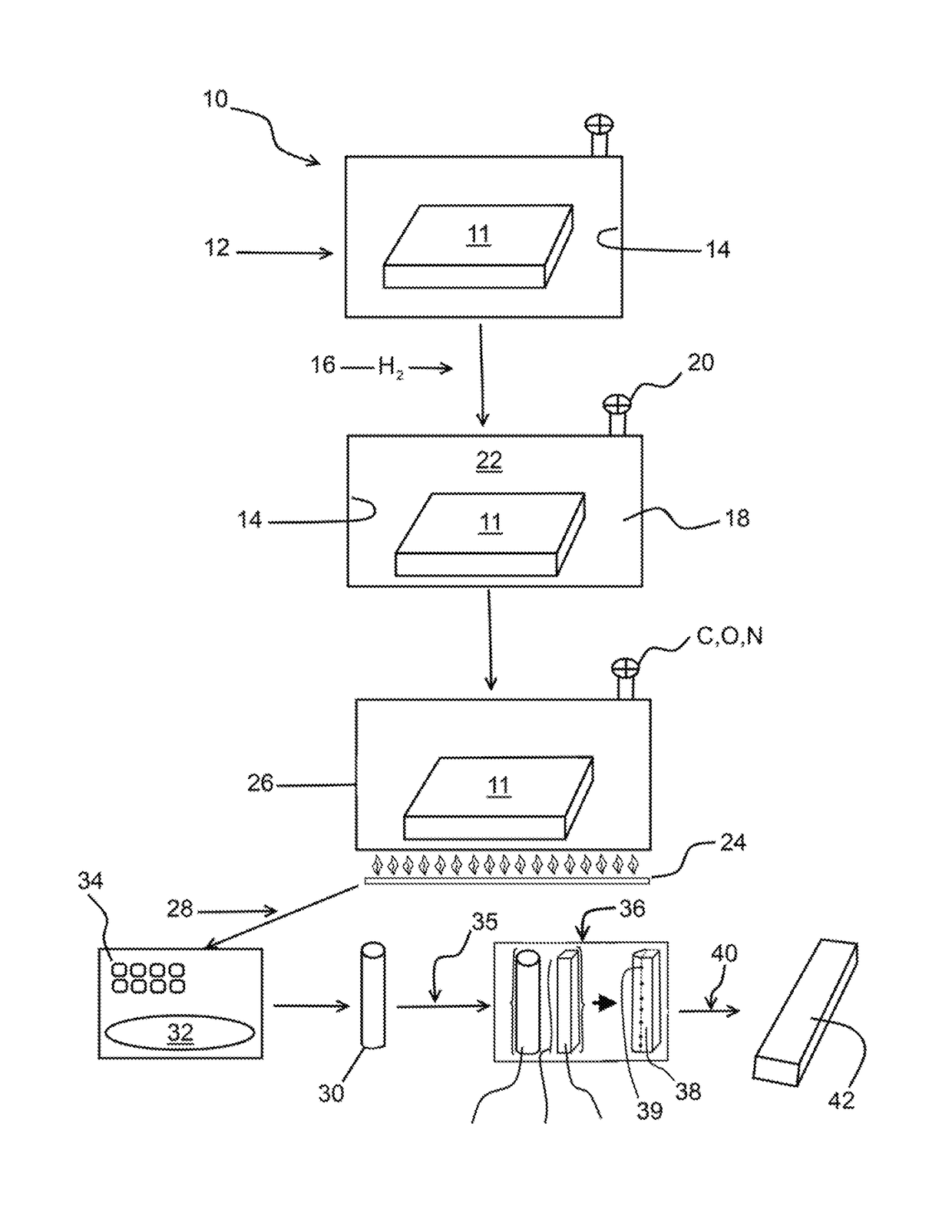Ductile metal alloys, method for making ductile metal alloys
a technology of ductile metal alloys and alloys, which is applied in the field of alloys and a method for making alloys for nuclear reactors, can solve the problems of short service life of materials comprising some reactor-pressure vessels, nucleation and growth of defect clusters, and so as to minimize the presence of impurities, reduce the formation of lattice anomalies, and increase ductility
- Summary
- Abstract
- Description
- Claims
- Application Information
AI Technical Summary
Benefits of technology
Problems solved by technology
Method used
Image
Examples
example
[0047]The starting stock used to produce Mo—Ti—Al alloys was Low Carbon Arc Cast (LCAC) molybdenum in either plate or rod form, which is commercially available unalloyed molybdenum with a relatively low carbon (≈40-70 ppm) and oxygen (≈20 ppm) content. Purification of the molybdenum was achieved by heat treating in a 100 percent hydrogen atmosphere at 1600° C. for a minimum of 72 hours, which generally reduces the carbon and oxygen content to levels<20 ppm and <10 ppm, respectively. As discussed supra, purification reduces the interstitial solute levels that can result in embrittlement.
[0048]Molybdenum was melted in a water-cooled copper trough. The water-cooled copper trough was chosen because of the high thermal conductivity of the copper and the ability of the flowing water to absorb the heat, thereby preventing the melting of the trough and the mixing of the metals. Chromium chips were distributed uniformly on the molybdenum melt stock. The trough chamber was evacuated and then ...
PUM
| Property | Measurement | Unit |
|---|---|---|
| ductile to brittle transition temperature | aaaaa | aaaaa |
| temperature | aaaaa | aaaaa |
| temperatures | aaaaa | aaaaa |
Abstract
Description
Claims
Application Information
 Login to View More
Login to View More - R&D
- Intellectual Property
- Life Sciences
- Materials
- Tech Scout
- Unparalleled Data Quality
- Higher Quality Content
- 60% Fewer Hallucinations
Browse by: Latest US Patents, China's latest patents, Technical Efficacy Thesaurus, Application Domain, Technology Topic, Popular Technical Reports.
© 2025 PatSnap. All rights reserved.Legal|Privacy policy|Modern Slavery Act Transparency Statement|Sitemap|About US| Contact US: help@patsnap.com



